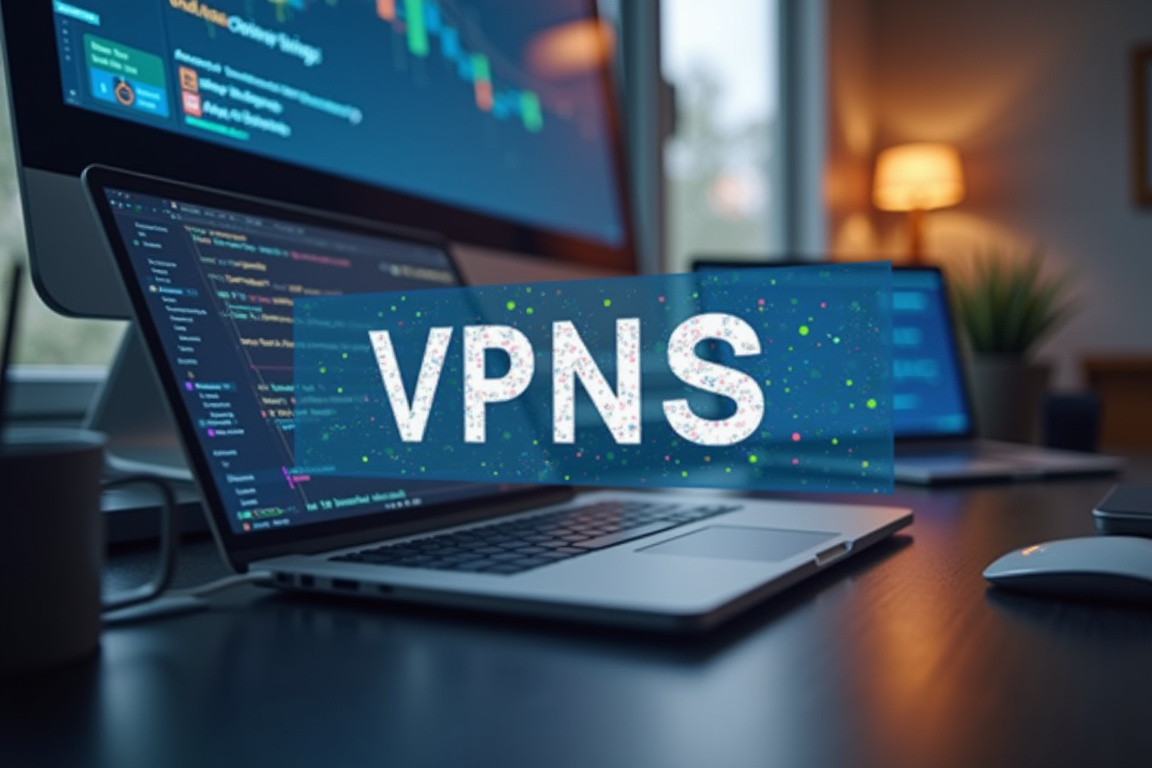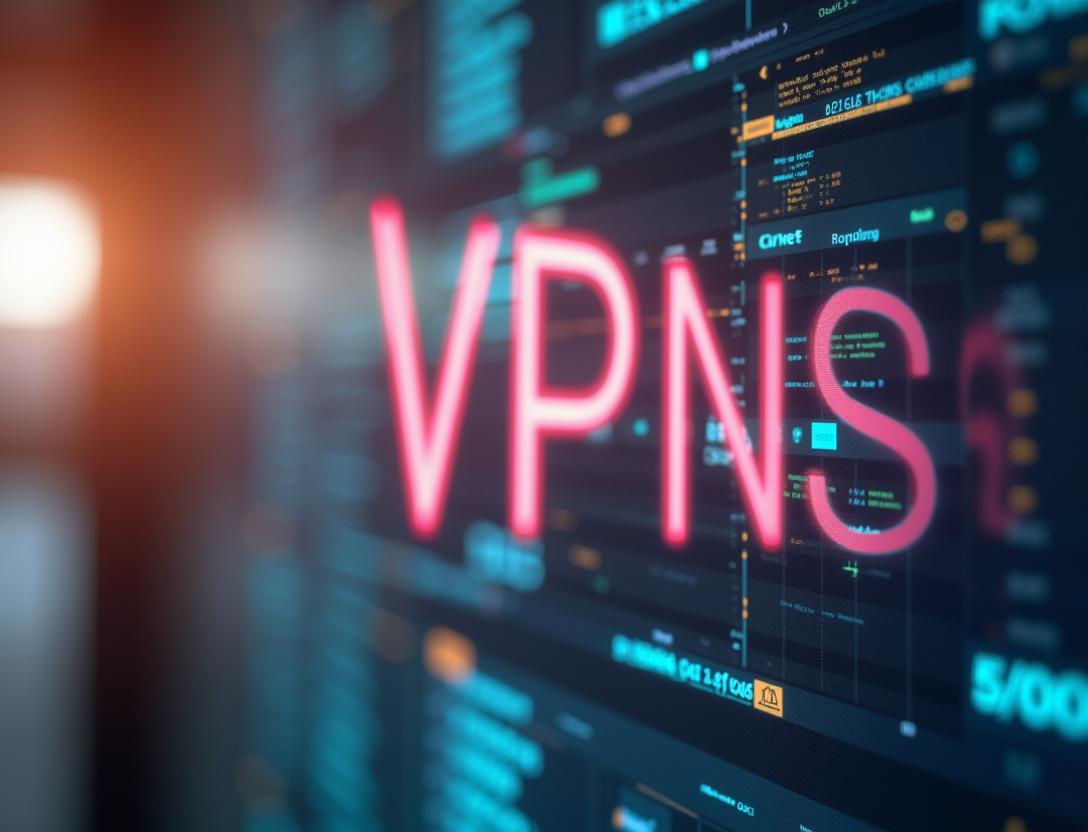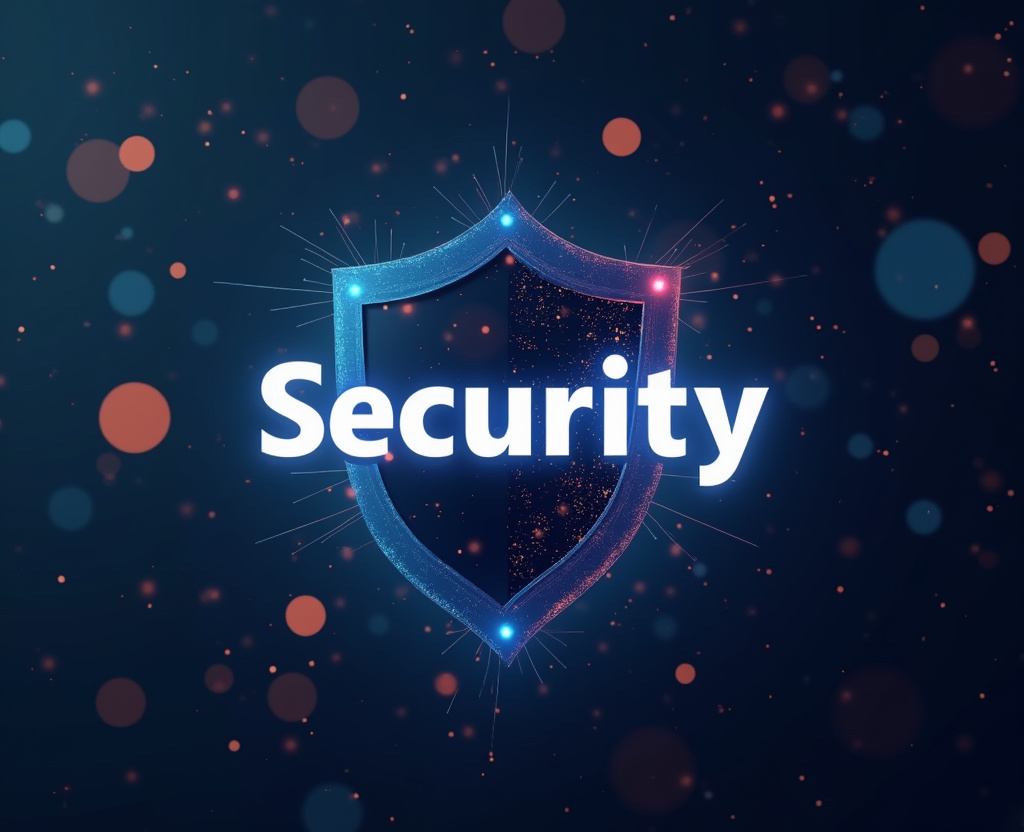Exploring Zero-Trust Architecture with VPNs

Table of Contents
comprehensive protection
In the ever-evolving landscape of cybersecurity, traditional network security models are increasingly proving inadequate. The perimeter-based approach, where trust is implicitly granted to users and devices within the network, crumbles under the weight of modern challenges like cloud migration, remote workforces, and the proliferation of interconnected devices. This demands a more dynamic and adaptive security posture, and that's where the convergence of Zero-Trust Architecture and Virtual Private Networks (VPNs) offers a compelling solution.
This article delves into the synergy between Zero-Trust and VPNs, exploring how organizations can leverage this powerful combination to achieve against a wide range of cyber threats. We'll examine the core principles of Zero-Trust, how they enhance traditional VPN functionality, and the key considerations for implementing a strategy. Ultimately, this exploration aims to provide a roadmap for organizations seeking to bolster their network security in the face of an increasingly complex and dangerous threat environment.
Zero-Trust, at its core, is not a product but a security philosophy – a fundamental shift from "trust but verify" to "never trust, always verify." It operates under the assumption that no user or device, whether inside or outside the network perimeter, should be inherently trusted. Every access request is treated with suspicion and subjected to rigorous verification before access is granted. This verification process considers various factors, including user identity, device posture, location, and the sensitivity of the requested resource.
This approach contrasts sharply with traditional VPNs, which, while encrypting network traffic and masking IP addresses, often grant broad access to the entire network once a connection is established. This "implicit trust" model creates a significant security risk, as a compromised account or device can potentially grant an attacker access to a vast range of sensitive data and systems. The underlying principles of Zero-Trust are centered around granular access control, least privilege access, micro-segmentation, and continuous monitoring.
Granular access control ensures that users only gain access to the specific applications and data resources they absolutely need to perform their job functions, minimizing the potential damage from compromised accounts or insider threats. Least privilege access dictates that users should only be granted the minimal level of access necessary to perform their tasks, preventing lateral movement within the network if an attacker manages to gain a foothold. Micro-segmentation divides the network into smaller, isolated zones, limiting the "blast radius" of a security breach and preventing attackers from easily traversing between systems.
Continuous monitoring involves constant vigilance, tracking user activity, network traffic, and system behavior to detect anomalies and potential security threats in real-time. Integrating these Zero-Trust principles with VPNs transforms the traditional VPN into an intelligent, adaptive security tool. Instead of simply providing a secure tunnel to the network, a solution combines the encryption and anonymity of a VPN with the stringent access control and continuous monitoring capabilities of a Zero-Trust architecture.
This means that even with a VPN connection established, users are still required to authenticate their identity, prove the security posture of their device, and be authorized to access specific resources based on defined policies. This posture significantly reduces the risk of unauthorized access, data breaches, and lateral movement within the network. Deploying a aligned with Zero-Trust requires careful planning and execution.
Organizations must first identify their critical assets and data, then define granular access control policies based on the principle of least privilege. This involves determining who needs access to which resources, under what conditions, and for how long. Key technologies involved in implementing a zero-trust VPN include strong authentication mechanisms (such as multi-factor authentication), device posture assessment tools, and security information and event management (SIEM) systems.
Moreover, organizations must implement robust monitoring and logging capabilities to detect and respond to security incidents in a timely manner. Regular security audits and penetration testing are essential to validate the effectiveness of the Zero-Trust implementation and identify any potential vulnerabilities.
zero-trust VPN
The implementation of a robust solution hinges on the effective integration of several key technologies and security measures. Central to this is a strong Identity and Access Management (IAM) system, which acts as the cornerstone for verifying user identities and enforcing access control policies. In a traditional network, once a user is authenticated, they often gain broad access based on their role or group membership.
However, in a Zero-Trust environment, the IAM system continuously re-evaluates access requests based on real-time context, such as user location, device posture, and the sensitivity of the data being accessed. This requires a sophisticated IAM system capable of supporting adaptive authentication, which dynamically adjusts the level of authentication required based on the risk associated with the access request. For example, accessing highly sensitive financial data from an unknown device and location might trigger a request for multi-factor authentication, while accessing less sensitive information from a trusted device on the corporate network might only require a simple password.
Device Posture Assessment (DPA) plays a critical role in ensuring that only healthy and compliant devices are granted access to network resources. DPA solutions scan devices for a variety of security factors, such as the presence of up-to-date antivirus software, operating system patch levels, disk encryption status, and firewall configuration. If a device fails to meet the defined security requirements, access can be denied, or the device can be placed in a quarantine network until the issues are remediated.
This prevents compromised or vulnerable devices from introducing malware or other threats into the network. Integrating DPA with the ensures that only devices that meet the organization's security standards are allowed to establish a VPN connection and access sensitive data. Micro-segmentation, as previously mentioned, is a key principle of Zero-Trust that involves dividing the network into smaller, isolated segments to limit the blast radius of a security breach.
In the context of a VPN, micro-segmentation can be used to restrict user access to specific applications or data resources based on their role and responsibilities. This means that even if an attacker gains access to a user's account, their lateral movement within the network will be significantly limited. For example, a sales representative might only be granted access to the CRM system and related sales data, while an engineer might only have access to the engineering design tools and project files.
This granular level of access control can significantly reduce the potential damage from a security breach. A Security Information and Event Management (SIEM) system is essential for collecting, analyzing, and correlating security logs from various sources across the network, including VPN gateways, firewalls, intrusion detection systems, and endpoint devices. The SIEM system can detect suspicious activity, such as unauthorized access attempts, malware infections, and data exfiltration attempts, and generate alerts for security analysts to investigate.
In a environment, the SIEM system provides real-time visibility into user activity and network traffic, enabling security teams to quickly identify and respond to security incidents. Continuous monitoring is a critical aspect of Zero-Trust and involves continuously monitoring user activity, network traffic, and system behavior for anomalies and potential security threats. This requires implementing robust logging and auditing capabilities across the network, as well as deploying advanced analytics tools to detect suspicious patterns of activity.
For example, a sudden surge in data transfer from a user's account, or an unusual login attempt from an unfamiliar location, could be indicative of a compromised account. Continuous monitoring allows security teams to proactively identify and respond to these types of threats before they can cause significant damage. Regular security audits and penetration testing are essential for validating the effectiveness of the Zero-Trust implementation and identifying any potential vulnerabilities.
Security audits involve a comprehensive review of the organization's security policies, procedures, and controls, while penetration testing attempts to exploit vulnerabilities in the network to assess its security posture. These assessments can help identify weaknesses in the Zero-Trust implementation and provide recommendations for improvement.
zero-trust VPN
Integrating threat intelligence feeds into the ecosystem is crucial for proactively defending against emerging threats and staying ahead of attackers. Threat intelligence feeds provide real-time information about the latest malware variants, phishing campaigns, and other cyber threats. This information can be used to enhance the detection capabilities of various security tools, such as firewalls, intrusion detection systems, and endpoint protection platforms.
By integrating threat intelligence feeds into the , organizations can automatically block malicious traffic, identify compromised devices, and prevent users from accessing malicious websites. This proactive approach significantly reduces the risk of a successful cyberattack. Beyond the technical components, a successful Zero-Trust implementation requires a shift in organizational culture and a commitment to security awareness training.
Employees must be educated about the principles of Zero-Trust and the importance of following security best practices. This includes training on how to identify and avoid phishing scams, how to protect their accounts with strong passwords and multi-factor authentication, and how to report suspicious activity. A strong security awareness program helps to create a security-conscious workforce that is less likely to fall victim to cyberattacks.
The transition to a architecture can be challenging, but it is essential for organizations to protect their sensitive data and systems in the face of an increasingly complex threat landscape. A phased approach to implementation is often recommended, starting with a pilot project to test the technology and processes before rolling it out across the entire organization. This allows organizations to identify and address any potential issues before they impact a large number of users.
Furthermore, it is important to involve stakeholders from across the organization in the implementation process, including IT security, network operations, and business units. This ensures that the Zero-Trust architecture meets the needs of the organization and is effectively implemented. When comparing different options with Zero-Trust capabilities, several factors should be considered.
Scalability is a crucial consideration, especially for organizations with a large number of remote users. The VPN solution should be able to handle a large volume of connections without impacting performance. Reliability is also essential, as downtime can disrupt business operations and expose the organization to security risks.
The VPN solution should be designed with redundancy and failover capabilities to ensure continuous availability. Security features are paramount, and the VPN solution should offer a comprehensive set of security features, including strong encryption, multi-factor authentication, device posture assessment, and intrusion detection. Management and reporting capabilities are also important, as they provide visibility into user activity, network traffic, and security incidents.
The VPN solution should offer a centralized management console that allows administrators to easily configure and monitor the system. Compliance requirements should also be considered, especially for organizations that are subject to regulatory requirements such as HIPAA, PCI DSS, or GDPR. The VPN solution should be compliant with these regulations and provide the necessary features to help organizations meet their compliance obligations.
Ultimately, the best solution is one that meets the specific needs of the organization and provides a comprehensive and effective security posture. It should be scalable, reliable, secure, and easy to manage. It should also be integrated with other security tools and technologies to provide a holistic view of the security landscape.
By carefully evaluating the available options and implementing a well-designed Zero-Trust architecture, organizations can significantly reduce their risk of data breaches and other cyberattacks. The benefits of far outweigh the costs and challenges of implementation.
zero-trust VPN
Beyond the core technical and strategic considerations, operational aspects significantly impact the long-term success of a implementation. Proper configuration, continuous monitoring, and timely incident response are vital for maintaining a strong security posture and mitigating potential risks. VPN gateways, for instance, must be meticulously configured to enforce granular access control policies, ensuring users only have access to the resources they need.
This involves defining specific rules based on user roles, device types, and network segments, aligning with the principle of least privilege. Regular audits of these configurations are crucial to identify and rectify any misconfigurations or deviations from established security policies. Continuous monitoring, as emphasized earlier, extends beyond simple network traffic analysis.
It encompasses real-time monitoring of user activity, security logs, and system performance to detect anomalies and potential threats. Security Information and Event Management (SIEM) systems play a central role, aggregating data from various sources to provide a holistic view of the security landscape. Automated alerting mechanisms should be configured to notify security teams of suspicious events, allowing for prompt investigation and response.
Effective incident response is critical for minimizing the impact of security breaches. Organizations should develop well-defined incident response plans that outline the steps to be taken in the event of a security incident, including containment, eradication, recovery, and post-incident analysis. These plans should be regularly tested and updated to ensure their effectiveness.
In the context of a , incident response may involve isolating compromised devices, revoking user access, and implementing temporary access restrictions to contain the spread of the incident. User training and awareness programs play a vital role in preventing security incidents. Employees should be educated about the risks associated with phishing scams, malware, and social engineering attacks.
They should also be trained on how to use the solution securely and report any suspicious activity. Regular phishing simulations and security awareness quizzes can help reinforce key security concepts and improve employee awareness. The choice of VPN protocol also impacts security.
While protocols like PPTP are outdated and known to have security vulnerabilities, more modern protocols like OpenVPN, WireGuard, and IKEv2/IPsec offer stronger encryption and authentication mechanisms. Selecting a secure VPN protocol is essential for protecting the confidentiality and integrity of network traffic. Furthermore, the VPN solution should support strong encryption algorithms, such as AES-256, to ensure that data is protected from eavesdropping.
Vendor selection is also crucial, because not all VPN providers adequately implement zero-trust principles. Organizations should carefully evaluate the security policies, privacy practices, and compliance certifications of potential VPN providers. Look for providers that have a strong track record of security and transparency and that are committed to protecting user data.
Additionally, organizations should assess the provider's support for multi-factor authentication, device posture assessment, and other key Zero-Trust technologies. The growing market of solutions is complex, and navigating it requires careful consideration. A proof-of-concept implementation of a with Zero-Trust capabilities is useful for evaluating different solutions and assessing their suitability for the organization's specific needs.
This allows organizations to test the technology in a real-world environment and identify any potential issues before committing to a full-scale deployment. By carefully considering these operational aspects, organizations can maximize the benefits of a implementation and maintain a strong security posture over time.
zero-trust VPN
Successfully navigating the adoption of a requires understanding the common pitfalls and proactively addressing potential challenges. One frequent hurdle lies in the complexity of implementation. Moving from a traditional perimeter-based security model to a Zero-Trust architecture demands a significant shift in mindset and a thorough understanding of the underlying principles.
Organizations often underestimate the time and resources required to properly assess their existing infrastructure, define granular access control policies, and integrate the necessary security tools. To mitigate this, a phased approach is recommended, starting with a small pilot project to test the technology and processes before rolling it out across the entire organization. This gradual implementation allows for iterative adjustments and reduces the risk of disrupting business operations.
Another potential pitfall is overconfidence in technology alone. While technology is a critical enabler of Zero-Trust, it is not a silver bullet. A successful implementation requires a holistic approach that also encompasses people, processes, and culture.
Organizations must invest in user training and awareness programs to educate employees about the principles of Zero-Trust and the importance of following security best practices. They must also establish clear security policies and procedures that are regularly reviewed and updated. Poorly defined or overly restrictive access control policies can hinder productivity and frustrate users, leading to workarounds that compromise security.
It is crucial to strike a balance between security and usability, ensuring that access control policies are granular enough to protect sensitive data but not so restrictive that they prevent users from performing their job functions effectively. This requires a deep understanding of user roles and responsibilities, as well as the specific resources they need to access to perform their tasks. Inadequate monitoring and logging can limit visibility into user activity and network traffic, making it difficult to detect and respond to security incidents.
Organizations must implement robust monitoring and logging capabilities to track user access, identify suspicious activity, and investigate potential security breaches. This requires integrating the solution with a Security Information and Event Management (SIEM) system to provide a centralized view of the security landscape. Neglecting device posture assessment can allow compromised or vulnerable devices to access network resources, potentially introducing malware or other threats.
Organizations should implement a Device Posture Assessment (DPA) solution to verify that devices meet certain security requirements before granting access to the network. This includes checking for up-to-date antivirus software, operating system patch levels, and disk encryption status. A lack of executive support can hinder the adoption of Zero-Trust.
Implementing a requires a significant investment of time and resources, and it often involves changes to existing business processes. Executive support is crucial for securing the necessary funding and resources, as well as for driving the cultural change required for successful implementation. By proactively addressing these common pitfalls, organizations can increase their chances of successfully adopting a and achieving a against cyber threats.
In conclusion, the integration of Zero-Trust principles into a represents a significant advancement in network security. By moving away from the traditional perimeter-based model and embracing a "never trust, always verify" approach, organizations can significantly reduce their risk of data breaches and other cyberattacks. The key to success lies in understanding the core principles of Zero-Trust, carefully selecting the right technologies, and implementing a holistic security program that encompasses people, processes, and culture.
The promise of through this convergence not only defends against threats but also enables secure remote work and cloud adoption, ultimately empowering organizations to thrive in today's dynamic digital landscape.
Stay Updated
Get the latest VPN news, tips, and exclusive deals to your inbox.




